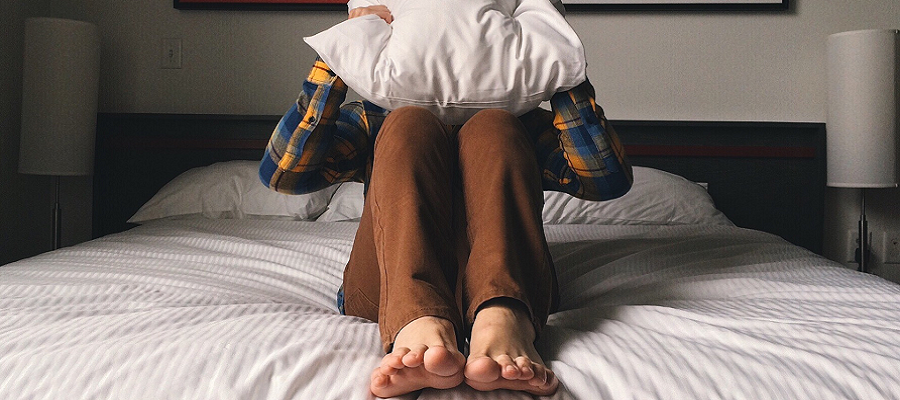
RLS may be considered a sleep disorder since symptoms are more common and intense during the evening when at rest so it can become difficult to fall asleep or return to sleep after waking up. Moving the legs or walking usually relieves the discomfort but the sensations often recur once the movement stops. RLS affects about 10% of people in the U.S. and is more prevalent in women with middle-aged individuals having more severe symptoms.
Restless legs syndrome (RLS), also known as Willis-Ekbom Disease, is a nervous system disorder that causes uncomfortable tingling, aching sensations in the legs and an overpowering urge to move them.
According to the National Heart, Lung, and Blood Institute, lack of iron or the incorrect use of iron in the brain are the main causes of RLS. People suffering from iron deficiency may see improvements in their symptoms by addressing that deficiency. Dietary iron can be found in foods such as red meat, dark leafy greens, liver, lentils, beans and iron-fortified cereals. However, some RLS sufferers may need supplemental iron (orally) to see a reduction in symptoms. Since vitamin C helps the body better absorb iron, taking iron pills with orange juice may be beneficial. If you are struggling with restless legs syndrome, talk to your health care provider about getting a blood test to check for iron deficiency.
RLS may also be caused by folate or magnesium deficiencies. Both these nutrients are necessary for proper muscle contraction and nerve impulse conduction. Eating more foods rich in these nutrients may help RLS symptoms. Some foods rich in folate include avocados, spinach, asparagus and brussels sprouts. Foods rich in magnesium include almonds, black beans and whole wheat pasta.
Exercise and physical therapy can help individuals with long-lasting relief. Gentle joint pressure, hot and cold therapy, and manual manipulation by a chiropractor or physical therapist can provide relief. Leg exercises can help contract the problematic muscles and can re-oxygenate them with fresh blood. Ellipticals and rowing machines are popular choices for this reason. Physical therapy can also manipulate the pelvis and feet to increase functionality throughout the entire area.
The most obvious remedy that people use to stop restless legs is getting up and moving. Leg movement often only helps for a very short period of time. Here are some alternative remedies for reducing symptoms:
- Hot or cold therapy: ice the legs or take a warm bath to relax the leg muscles before bed
- Decrease caffeine intake
- Decrease alcohol intake
- Stop smoking
- Good nutrition and vitamin D supplementation
- Massage
- Regular exercise
- Deep breathing exercises
- Yoga
